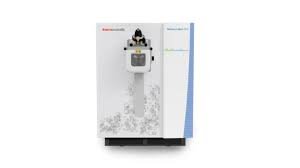Thursday, 13 November 2025
AZTI develops AI model to optimise identification of fish schools
AI application designed to enhance the management and sustainability of commercial fisheries AZTI, a pioneering centre in integrating new technologies in the fishing industry, has developed an innovative AI application designed…

AI application designed to enhance the management and sustainability of commercial fisheries
AZTI, a pioneering centre in integrating new technologies in the fishing industry, has developed an innovative AI application designed to enhance the management and sustainability of commercial fisheries.
The AZTI team has built an automatic classification model that identifies the main pelagic species in the Bay of Biscay, such as anchovy, sardine, and Atlantic mackerel, based on their schooling behaviour. The classification of fish schools detected by acoustic echosounders represents a crucial advancement for managing pelagic species found in highly diverse ecosystems and enables the study of specific behavioural changes in the presence of other species. This type of study allows us, through multidisciplinary surveys like JUVENA, to go beyond the management of the main pelagic fish species and aim to understand the functioning of the entire pelagic ecosystem, from plankton to apex predators such as birds and cetaceans.
The AI model, trained with poorly labelled data, uses fully and partially labelled schools. The model outputs are probabilistic, providing the likelihood of a given school belonging to each study species. Comparing the probabilities assigned to different species enables the assessment of the model’s reliability in each prediction.
The results are promising: the use of AI in acoustic data from sonars and echo sounders on fishing vessels has emerged as an effective strategy to enhance fisheries management. Automatically discriminating schools, in addition to reducing the data processing time in scientific surveys, can increase the accuracy of the data used for the assessment of the annual pelagic species distribution and abundance. Furthermore, automatic school classification can potentially increase fisheries efficiency and sustainability by reducing significantly the by-catch.
The results published in the ICES Journal of Marine Science, show a 63.5 per cent accuracy in classifying labelled schools, and about 80 per cent accuracy considering labelled and unlabelled schools at haul level.
Technology
Tetra Pak opens Product Development Centre in France
Nov 13, 2025 | Company News
MENU ORDER AI to launch app aimed at GLP-1 users and health-conscious diners
Nov 10, 2025 | Company News
Harnessing Quantum AI for Greener Minds and Healthier Futures
Nov 10, 2025 | Interaction
Food Testing
Intertek acquires Costa Rican testing business Suplilab
Nov 07, 2025 | Company News
Thermo Fisher Scientific launches Orbitrap mass detector for food safety testing
Oct 24, 2025 | Company News
ADM advances quality capabilities with opening of new Central Milling Laboratory
Oct 16, 2025 | Company News
More Popular
Syren Spreads launches spoonable adaptogenic beauty chocolate
Nov 13, 2025 | Company News
Gunpowder Irish Gin expands with new Italian Fig & Laurel Expression
Nov 13, 2025 | Beverages
8 winter foods that transform your skin by healing your gut first
Nov 13, 2025 | Beverages






